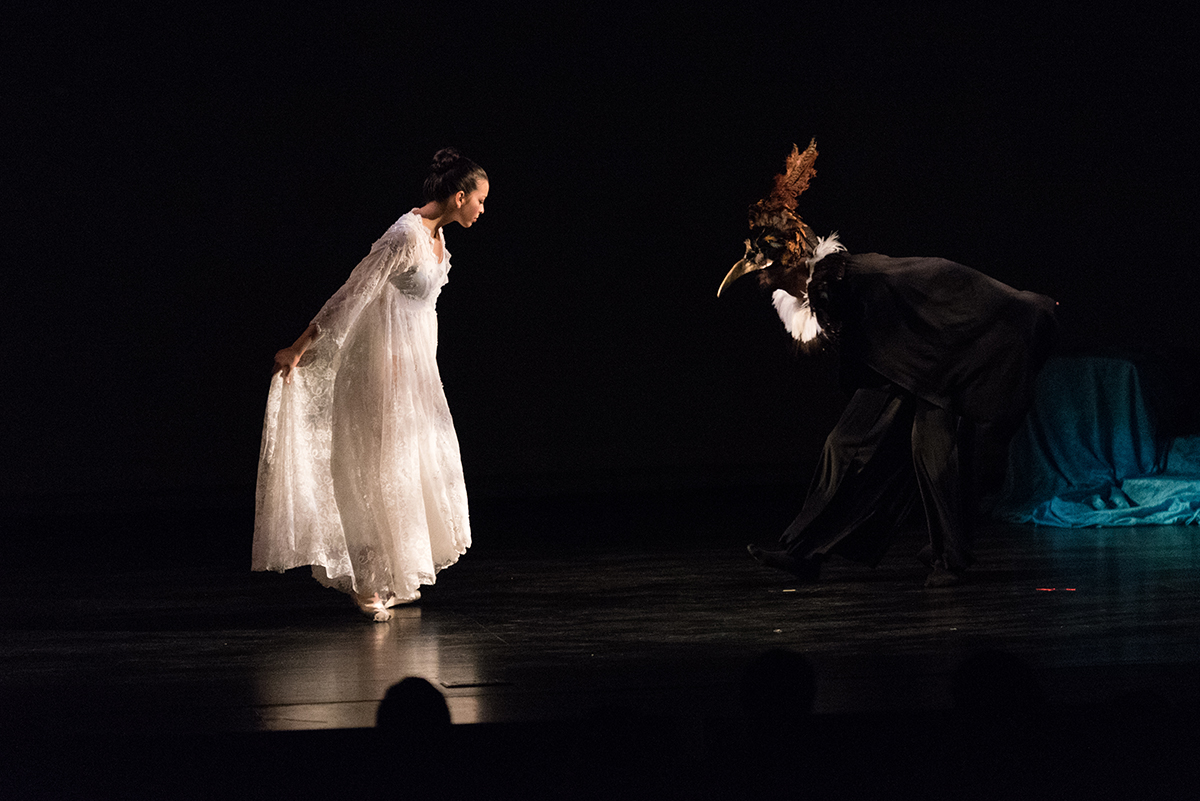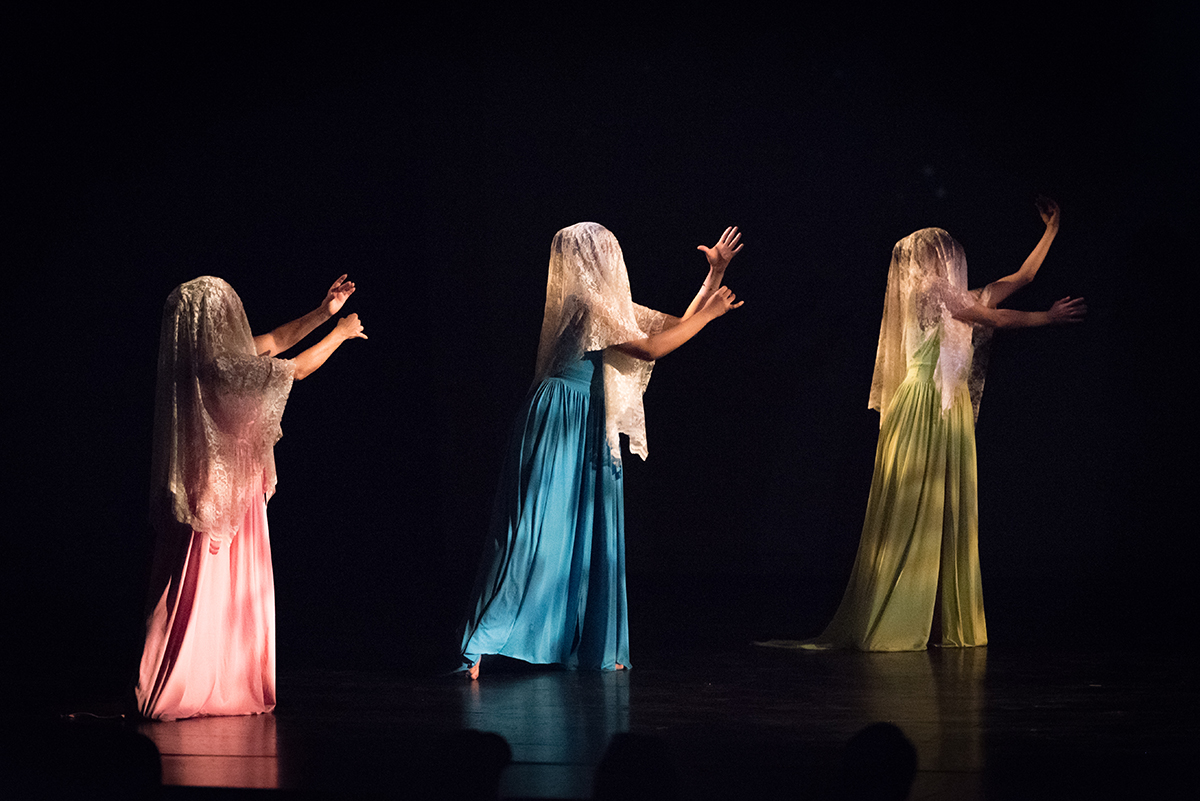In anticipation of VMFA’s next Family Day, which takes place Saturday, September 15, we sat down with Ana Ines King, artistic director for the Latin Ballet of Virginia, to discuss its involvement in the recurring event. This Family Day, titled Celebrate the Art of Latin America, focuses on the region of Patagonia and includes performances by the Latin Ballet. For a detailed schedule of activities, performances, and demonstrations please click here for the full event page.


Q: How did you first get involved with VMFA’s Family Day events and how long have you participated with us?
A: The Latin Ballet has participated in family events with VMFA for about 17 years, since the museum started celebrating Hispanic heritage month every September. One of the first performances was Macondo representing Colombia.
Q: What would you like our audience to know about the Latin Ballet of Virginia?
Our mission exemplifies who we are: To enrich and connect communities through Latin/Hispanic cultural dance experiences with a commitment to education, diversity, and accessibility. For Virginians of all ages and backgrounds who want to enrich their cultural knowledge and experiences, the Latin Ballet of Virginia connects the community to Latin culture and vitality through dance. Latin Ballet of Virginia offers inclusive instruction and inspired performances through a premier, culturally diverse dance experience.
Q: Tell us a little bit about your process in creating a dance, or performance, that will highlight the specific culture or country that Family Day celebrates each year?
A: The Latin Ballet has a large repertoire based on the culture, legends, and traditions of the different countries in Latin America. Depending on the country the museum wants us to represent, I borrow from our repertoire or I create new works inspired by searching myths or legends from the country we need to represent. For example, when the museum wanted to represent Mexico, we brought Dia de los Muertos from our repertoire. When the museum asked for Colombia, we brought Macondo, based on the novel, One Hundred Years of Solitude by Gabriel Garcia Marquez, representing the magical realism and culture of the country. In past years, we’ve also focused on Central America and the Caribbean.
Q: What can our visitors expect at this year’s performance during the Celebrate the Art of Latin America: Patagonia Family Day event taking place Sep 15 at VMFA?
A: This year was a challenge because the Latin Ballet did not have anything related to Patagonia in our repertoire. So I searched the legends and myths from the region and loved the story of the Amancay Legend. We are representing in dance, the legend of the Amancay flower from Patagonia. Children and their families will learn about the legend through an introductory video that tells the story, and then it will be represented in dance. Here is a synopsis of the legend:
The legend of the Amancay Flower:
A long time ago, the valley of the Tronador Mountain, in Patagonia, was inhabited by the vuriloche Indians. Quintral, a brave young Indian, son of the tribe chief, was in love with Amancay, a very beautiful girl. But the old chief did not agree to their wedding. One day, a terrible epidemic spread all over the valley. The people in the tribe became ill and many of them died. Quintral got ill too. In his strong fever, he repeated Amancay, who loved Quintral deeply. She decided to ask Machi, the wise old witch, for help.
“If you save Quintral and the tribe,” Machi told her, “you’ll have to climb the top of the hill, where a marvelous flower grows. It’s yellow like the sun and has a soft perfume. You must pick it at sunset and bring it to me before dawn. I’ll use it in a magic beverage. When Quintal and all the sick people drink it, they’ll soon recover.”
Amancay thought of her dear Quintral and the tribe. She ran to the mountain and started to climb despite the difficulties on the way. She was afraid, but her love was stronger than her fear. With the last sunlight she reached the top, found the flower and cut it carefully.
As she was getting back happily with her treasure, some powerful claws grabbed her by the shoulders and captured her. It was the Cóndor, the King of the Mountains. Amancay was scared. She cried and begged, but the Cóndor would not let her free. In the end she had to make a deal. She would offer her heart in exchange for the flower reaching the witch before dawn. Manqué, the cóndor, agreed. The flower was taken to the witch’s hands while the cóndor’s claws held Amancay’s heart tightly. Red blood drops sprinkled the the mountain paths and the following day beautiful yellow flowers with red dots grew along the paths and the clear streams that ran downhill.
From that day on, yellow and red Amancay flowers cover the Tronador valley every spring. If someone gives you an Amancay flower, it is said that they are giving you their heart. The Amancay is considered a symbol of unconditional love.
Join us this weekend, to celebrate the art, culture, traditions, and beauty of South America’s Patagonia region at VMFA’s Celebrate the Art of Latin America: Patagonia Family Day. Discover and learn through dance workshops, food, performances with the Latin Ballet of Virginia, and so much more! Participate in Patagonia-inspired art activities and community projects such as creating a glacier landscape and a penguin lantern with 1708 Gallery, and join Studio Two Three in a painting project inspired by The Cave of Hands. Come create with VMFA!
Sat, Sep 15, 2018
11 am–3 pm
Museum-wide
Free, no tickets or reservations required!